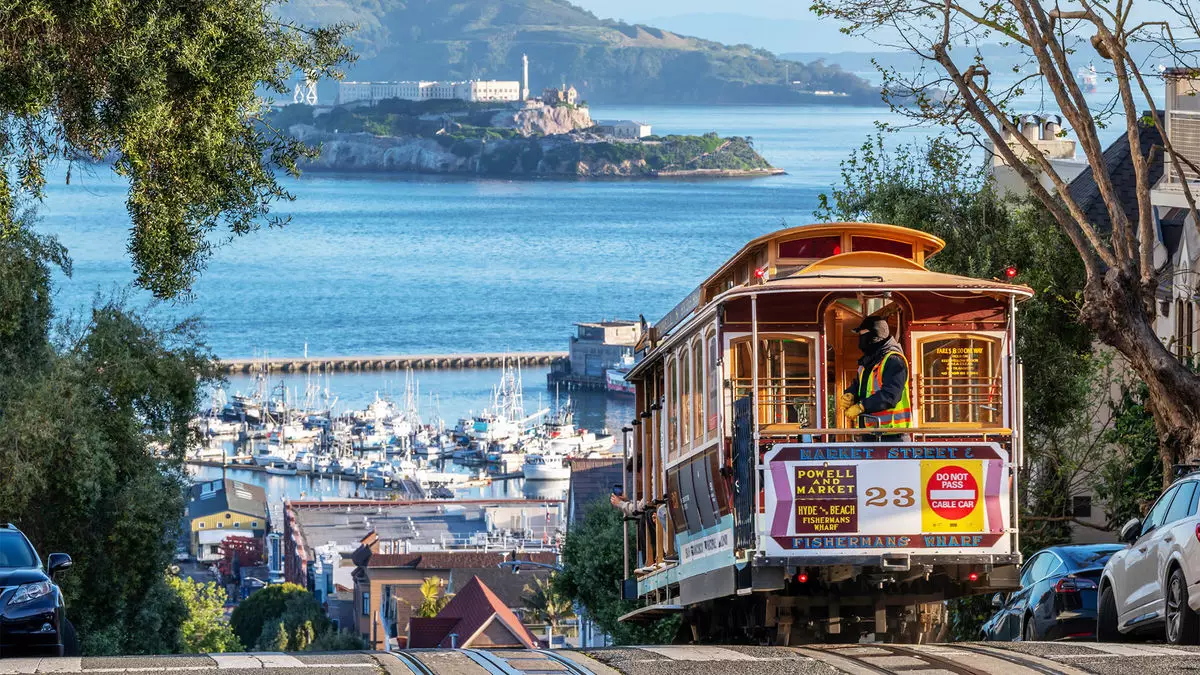San Francisco’s tourism and hospitality sectors have been navigating through turbulent waters since the COVID-19 pandemic decimated the industry. The latest statistics reveal that 2024 was a particularly challenging year for this iconic city, as it experienced one of its lowest visitor counts in years. Industry experts, however, are unveiling optimistic forecasts for the future. According to Emmy Hise, the Senior Director of Hospitality Analytics at CoStar, the turning point may be as close as 2025. This anticipated rebound hinges on a series of high-attendance events scheduled for next year, along with an upturn in convention business.
Despite the potential for recovery, the scars from recent setbacks remain evident. The latter months of 2024 saw a series of hotel labor strikes affecting nearly 27% of the city’s accommodations, exacerbating the challenges faced by the industry. Hise noted that 2024 is likely to be the “trough of the recovery,” as the absence of significant conventions and major events has hindered any promising last-minute bookings.
Analyzing the data reveals a daunting picture: San Francisco’s hotels are struggling to regain their previous strength. The average daily rate (ADR) has fallen roughly 3.8%, while revenue per available room (RevPAR) has decreased by 3.7% year-to-date as of October 2024. These declines have pushed San Francisco to the bottom of the ranks for hotel rate recovery among U.S. markets. Once a premier destination with a 2019 ADR of $247, current room rates languish at around $220, trailing behind even 2016 levels.
Anna Marie Presutti, CEO of the San Francisco Travel Association, characterized 2024 as an exceptionally difficult year. Echoing sentiments of resilience, she expressed relief at the year’s conclusion, viewing the challenges of the past few years as opportunities for growth. Nonetheless, the ongoing absence of international tourists, including many from Asia, continues to weigh on the local economy.
Confronting Public Safety Perceptions
Public safety has been another focal point as San Francisco wrestles with its image. Despite persistent concerns regarding crime, recent statistics provide a glimmer of hope; property crime decreased by 32%, and violent crime fell by 14% year-over-year in May 2024. Presutti assured that the city is diligently addressing safety perceptions through substantial investments, such as funding for additional police officers and advanced surveillance technologies.
Moreover, progress is being made in tackling the issue of homelessness, with early 2024 figures indicating the lowest street homelessness numbers in a decade. This dramatic shift can be attributed to increasing shelter capacity and housing availability. Presutti pointed out that the prevailing “doom loop” narrative is outdated and the city’s intrinsic beauty and iconic status remain unchanged.
Upcoming Events: A Catalyst for Change
Looking forward, San Francisco is set to regain the spotlight with a series of high-profile sporting events scheduled throughout 2025, such as the NBA All-Star Game and NCAA March Madness. These events are expected to enhance the city’s visibility and positively influence public perception. With the greater area also gearing up to host significant events like the FIFA World Cup and the Super Bowl in 2026, there is much to anticipate.
Convention bookings are on the rise as well, with Microsoft making a notable return to the city by confirming its Microsoft Ignite conference for November 2025, a leap from the traditional 5- to 10-year planning window for such events. This rapid turnaround showcases a shifting dynamic within the city’s event planning landscape and signifies renewed confidence in the city’s marketing potential.
Forecasts indicate a gradual increase in visitor volume, projecting growth from 23.2 million in 2024 to 23.9 million in 2025. Spending is also expected to surge, nudging from $9.24 billion to an impressive $10 billion in the same timeframe. Furthermore, hotel occupancy is set to climb from a projected 62.8% to 64.1% in 2025, along with an increase in ADR.
San Francisco’s Moscone Center is anticipating a rise in events from 25 to 30, generating an additional 659,700 room nights—a 60% increase that underscores the city’s revitalized appeal. Enhancing visitor experiences will be crucial; new entertainment zones and expanded cultural festivals are designed to invigorate neighborhoods and provide fresh reasons for exploring the city.
As it stands, San Francisco is preparing to embark on a thoughtful marketing campaign, seeking to surprise potential visitors with the city’s unique offerings. “You’re going to see San Francisco show up in unexpected places,” Presutti asserts, positioning the city as a destination ready to rediscover its storied vibrancy and allure.
While challenges persist, the potential for San Francisco’s visitor industry to rebound is a narrative filled with hope and strategic action, heralding a brighter future ahead.


Leave a Reply